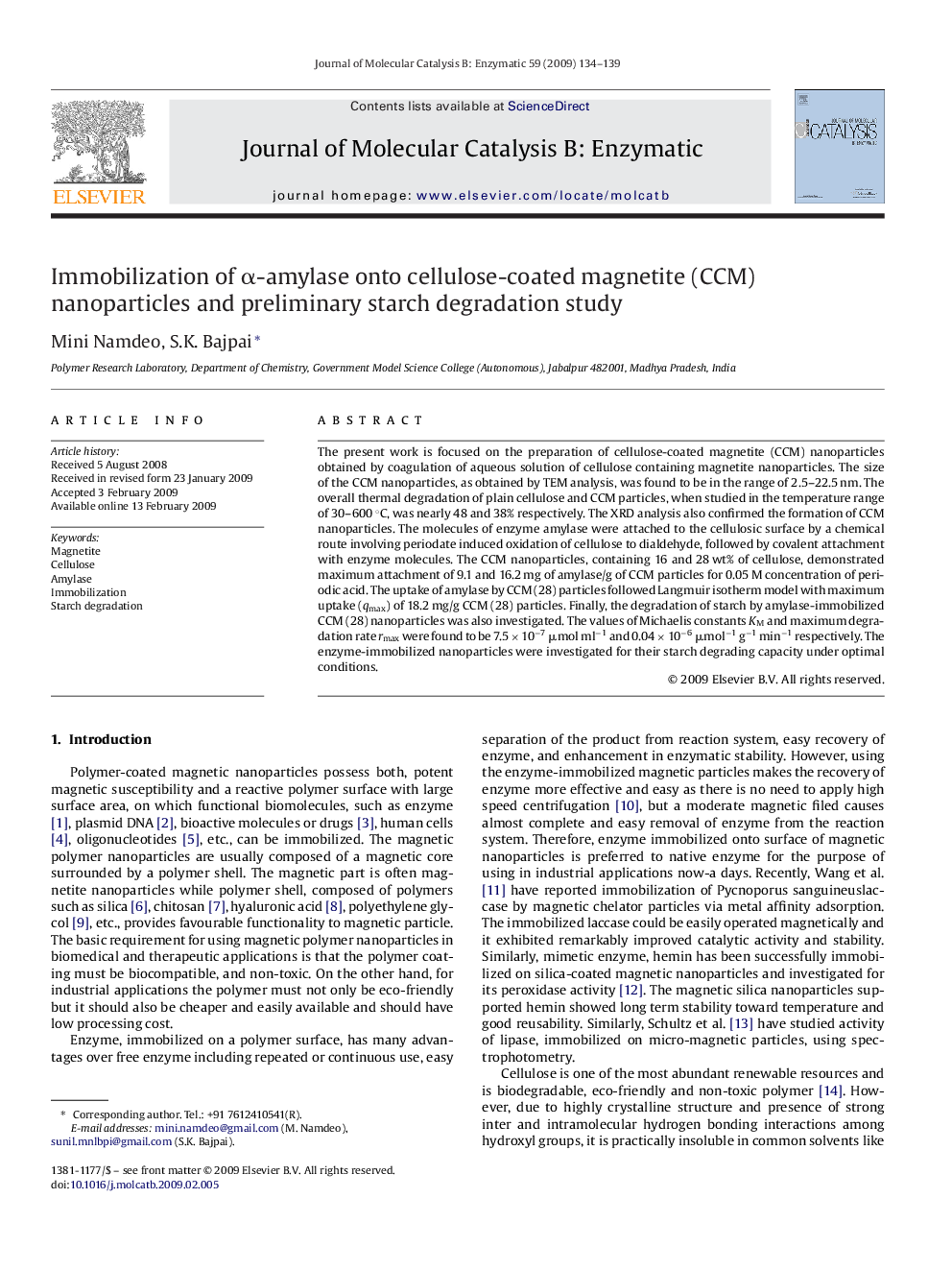| Article ID | Journal | Published Year | Pages | File Type |
|---|---|---|---|---|
| 70637 | Journal of Molecular Catalysis B: Enzymatic | 2009 | 6 Pages |
The present work is focused on the preparation of cellulose-coated magnetite (CCM) nanoparticles obtained by coagulation of aqueous solution of cellulose containing magnetite nanoparticles. The size of the CCM nanoparticles, as obtained by TEM analysis, was found to be in the range of 2.5–22.5 nm. The overall thermal degradation of plain cellulose and CCM particles, when studied in the temperature range of 30–600 °C, was nearly 48 and 38% respectively. The XRD analysis also confirmed the formation of CCM nanoparticles. The molecules of enzyme amylase were attached to the cellulosic surface by a chemical route involving periodate induced oxidation of cellulose to dialdehyde, followed by covalent attachment with enzyme molecules. The CCM nanoparticles, containing 16 and 28 wt% of cellulose, demonstrated maximum attachment of 9.1 and 16.2 mg of amylase/g of CCM particles for 0.05 M concentration of periodic acid. The uptake of amylase by CCM (28) particles followed Langmuir isotherm model with maximum uptake (qmax) of 18.2 mg/g CCM (28) particles. Finally, the degradation of starch by amylase-immobilized CCM (28) nanoparticles was also investigated. The values of Michaelis constants KM and maximum degradation rate rmax were found to be 7.5 × 10−7 μmol ml−1 and 0.04 × 10−6 μmol−1 g−1 min−1 respectively. The enzyme-immobilized nanoparticles were investigated for their starch degrading capacity under optimal conditions.
